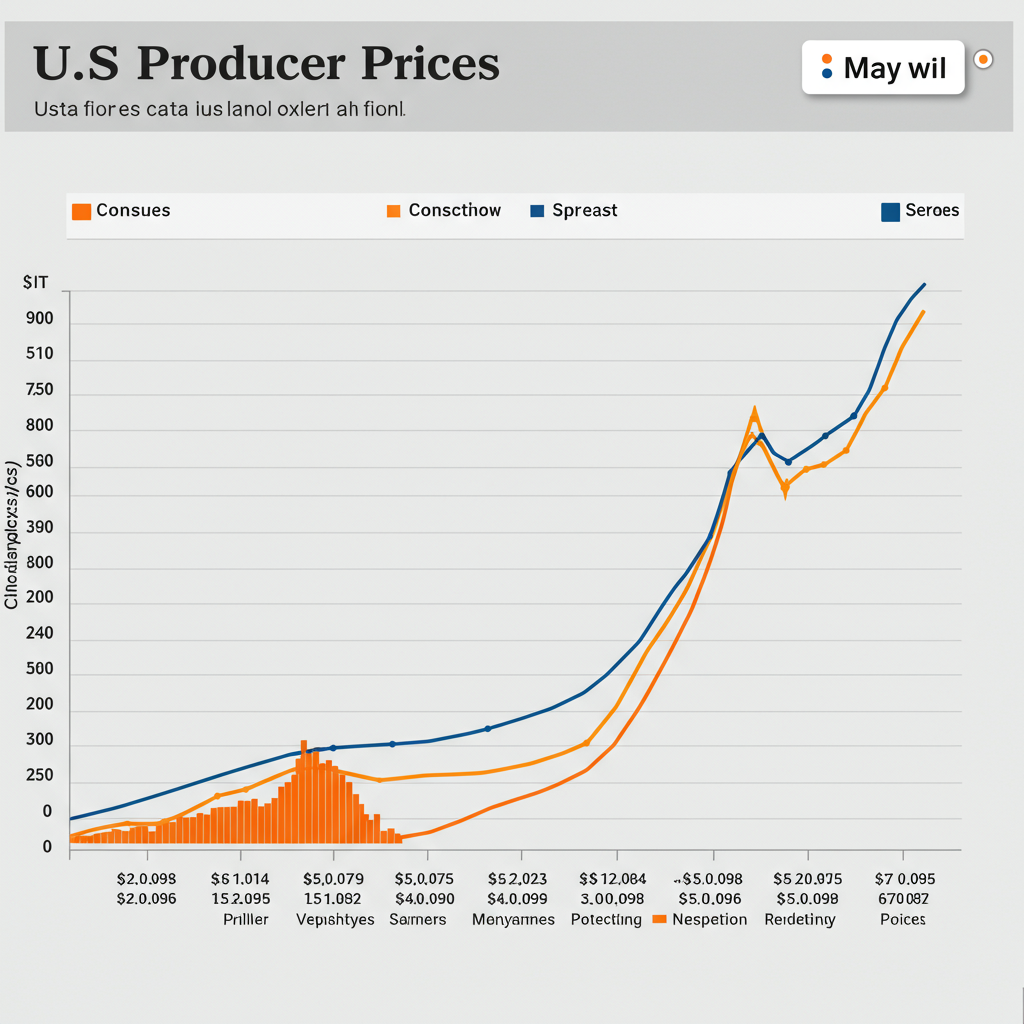May PPI: US Producer Prices Show Modest Gain, Below Forecast
Newly released data indicates that U.S. producer prices increased modestly in May, rising less than expected, which could influence the Federal Reserve’s future monetary policy decisions. The Producer Price Index (PPI) for final demand edged up by just 0.1% last month, according to the Labor Department’s Bureau of Labor Statistics.
This marginal increase follows a revised 0.2% decline in April, suggesting wholesale inflation remains relatively contained. Economists polled by Reuters had anticipated a slightly larger 0.2% rise for May.
Looking at the year-over-year picture, the PPI advanced 2.6% in May, a slight acceleration from the 2.5% gain registered in April. This annual rate aligned with economists’ expectations.
A Deeper Dive into the May PPI Data
The subdued nature of the May producer price report provides further evidence that price pressures at the wholesale level might not be escalating rapidly, despite some underlying cost factors.
Monthly Movement: The 0.1% month-over-month increase in May reversed two consecutive months of declines, including the previously mentioned dip in April.
Goods vs. Services: Both goods and services contributed to the slight uptick. Goods prices rose by 0.2% month-over-month, while services inched up by 0.1%.
- Key Drivers & Restraints: Specific categories influencing the index included a rebound in trade services prices (up 0.4%), with margins for machinery and vehicle wholesaling seeing a notable surge. Producer prices for durable consumer goods also rose, marking the largest monthly increase since January 2023. However, these increases were partially offset by falling costs in other areas, such as airline passenger services, which saw a decrease.
- www.tastylive.com
- finance.yahoo.com
- www.businesstoday.com.my
- www.rttnews.com
- www.staradvertiser.com
Core Inflation and Underlying Pressures
A key metric closely watched by policymakers is the core PPI, which strips out volatile food and energy costs. Core PPI rose by a muted 0.1% in May on a monthly basis. Year-over-year, the core wholesale inflation rate eased slightly to 3.0% in May, down from 3.1% in April, marking its softest rise since August 2024.
While the headline figures appear tame, some analysis points to persistent underlying cost pressures faced by producers. Impacts from tariffs, particularly on inputs like metals, are steadily flowing into production costs for items such as machinery and vehicles. However, a significant “wave of tariff-induced cost spikes remains missing from the data,” suggesting that the expected pass-through of these costs to final consumer prices may be delayed or muted for now.
Broader Economic Context: CPI and Tariffs
The May PPI report follows closely on the heels of relatively soft U.S. Consumer Price Index (CPI) data for the same month, which also showed inflation rising less than expected. This combined picture of contained inflation at both the wholesale and consumer levels provides the Federal Reserve with considerable flexibility.
Economists widely anticipate that inflationary pressures could intensify in the latter half of the year, primarily due to the potential for higher import tariffs to feed into prices. The slow response of inflation to tariffs so far is attributed partly to retailers selling existing inventory and businesses being hesitant to raise prices sharply amid uncertain demand.
Implications for the Federal Reserve and Financial Markets
The softer-than-expected inflation data from both the PPI and CPI reports reinforce the view that the Federal Reserve has “room to sit on their hands” regarding interest rates. The U.S. central bank is widely expected to maintain its benchmark overnight interest rate at the upcoming policy meeting, currently in the 4.25%-4.50% range.
Muted inflation trends, combined with emerging signs of a softening labor market (such as initial jobless claims holding at their highest levels since late 2024), support the Federal Open Market Committee’s (FOMC) broader outlook for potential interest rate cuts later in the year, possibly starting in September or early autumn.
Financial markets reacted positively to the inflation data, interpreting it as supportive of easier monetary policy prospects. Treasury bond yields fell, the U.S. dollar weakened against major currencies, and gold prices climbed. U.S. stock markets also showed a notable recovery, reversing earlier declines to close higher, with indices like the S&P 500 and Dow reaching new three-month highs.
Uncertainty remains, particularly regarding the full extent and timing of tariff impacts on long-term price trends. The market focus now shifts to upcoming economic indicators, such as consumer confidence data, to gauge the health of consumption, the largest component of U.S. GDP growth.



